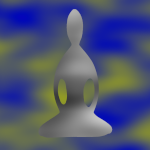Dear Friends,
My dog, Reece, has interesting habits. When I’m in the kitchen and I open the treat door, no matter where he is in the house, he will come running. However, if I turn on the toaster oven, he will run to another part of the house. If I’m washing the dishes, he may or may not come visit me.
For him, the sound of the treat drawer is associated with something pleasant – getting a treat!
I think he associates the sound and smell of the toaster oven with this one time a year ago when there were some crumbs at the bottom that got a bit smoky and set off the smoke alarm. For him, that was very scary and unpleasant!
The sound of me washing dishes isn’t particularly pleasant or unpleasant.
We probably notice tendencies like this ourselves.
In the summer, when I’m out walking around supper time, I might smell someone barbecuing, and my stomach starts to gurgle, and my mind starts to think about what I should eat! By contrast, if I walk by a stinky garbage bin, my nose crinkles, and my pace might increase to get away from the smell.
So what does this have to do with meditation and mindfulness?
One thing we can do in our practice is to notice – what’s pleasant, what’s unpleasant, what’s not really either pleasant or unpleasant. (We often short-cut that last one to “neutral.”) And then notice what happens next.
If I am meditating, and there is an itch – that’s generally unpleasant – and then I can notice my hand reaching towards my cheek and scratching. Or maybe I notice the blanket I have over my legs is warm and soft on this cool morning – so pleasant – and next thing you know, I’m thinking about getting another blanket for the bedroom and… off I go into thoughts.
Meditation is a small laboratory where we can notice various stimuli, the flavor or charge or “feeling tone” of the experience (pleasant, unpleasant, neutral), and the default reaction to it (I like this; I don’t like that; I don’t notice or I’m bored). We can also experiment with what happens when we don’t act on that initial impulse. Let the itch be itchy and see what happens. Wait for the urge to have the second bite of the cookie to pass. Allow the boredom to evolve on its own without us having to space out or distract ourselves.
With mindfulness, we can start to notice the feeling tone, and then open up a gap between the stimulus and what we do next. We can learn to respond instead of react. We can see where we have choices.
This can open up a level of freedom and non-reactivity in so many cases where we are being driven by underlying tendencies.
For a practice, Mark Nunberg led a meditation to notice feeling tones, which you can access here:
https://www.dharmaseed.org/teacher/543/talk/61610/
What sorts of pushes and pulls do you notice in practice or in life? I welcome your input as a comment here on the blog or by email.
With good wishes,
Andrea

Thanks very much for this reflection Andrea. I find that feeling tone is a very useful way of connecting with my body. By using feeling tone in my practice I become more aware of the effect that a thought has had on my physical and emotional state.